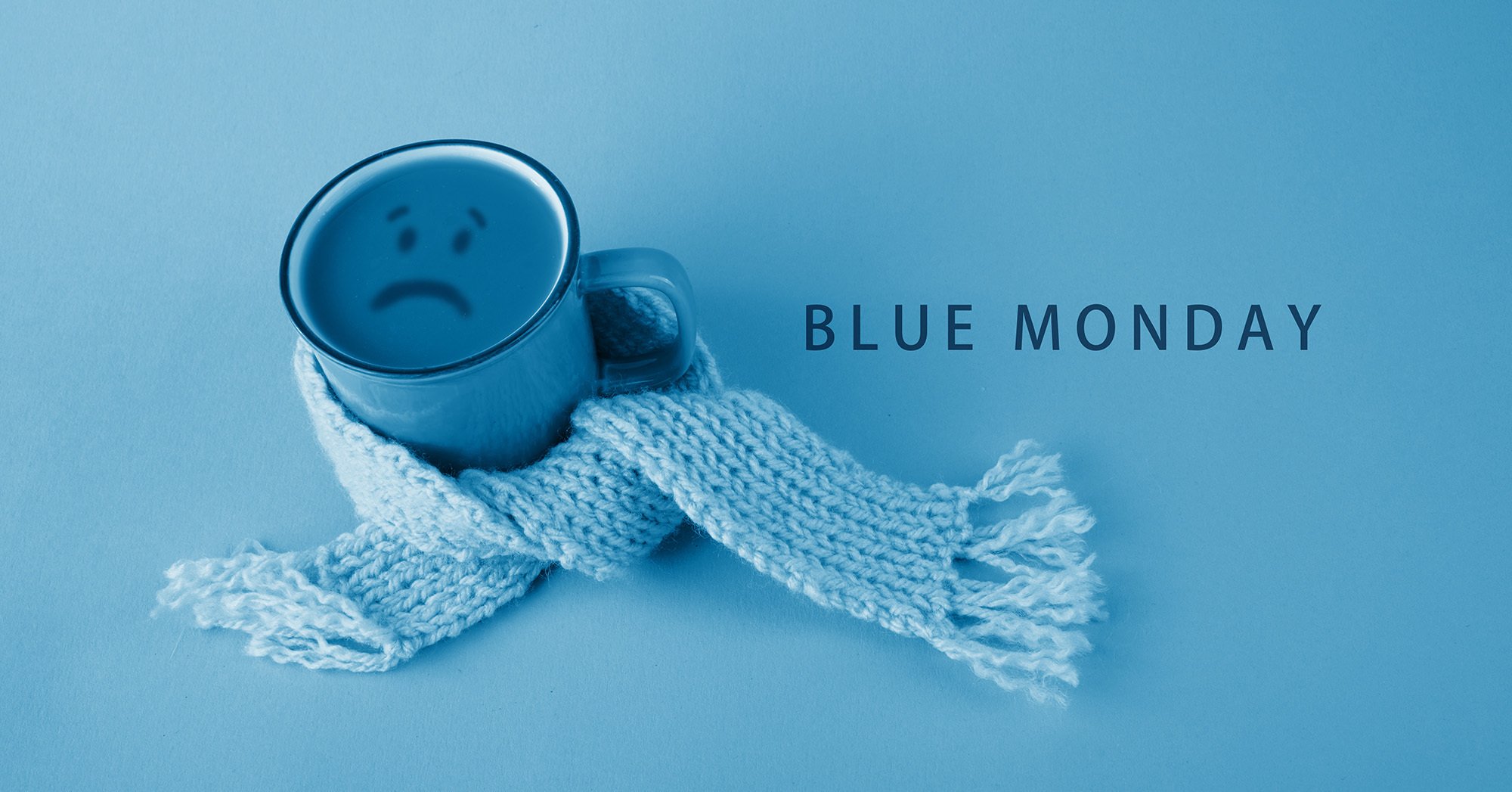Feeling especially down this time of year? You're not alone. Millions of American adults experience SAD—Seasonal Affective Disorder—a form of depression that usually starts in the fall when the days begin to get shorter and there is less sunlight, and lasts until the spring. In fact, the third Monday in January has earned the title of Blue Monday as the most depressing day of the year!

Although the science behind Blue Monday is a bit questionable, this time of year is notoriously bleak, particularly for those living farther north of the equator where there are less daylight hours in the winter. This winter, especially, has brought us a double depression whammy with COVID-19—and the sadness, worry, and isolation that goes along with it—so there are more people than ever struggling with SAD. The good news is that there are many things you can do to help manage and alleviate the symptoms that this seasonal depression brings. But first, let’s learn a little more about Seasonal Affective Disorder.
What is Seasonal Affective Disorder?
Seasonal Affective Disorder, sometimes referred to as ‘winter blues’, is not a separate disorder but, rather, a type of depression characterized by its recurrent seasonal pattern, with symptoms lasting about 4 to 5 months per year. The most difficult months for people feeling depressed with SAD in the United States tend to be January and February.
The causes of SAD are not fully understood, but has been linked to a biochemical imbalance in the brain exacerbated by shorter daylight hours and less sunlight in winter. During this time, people experience a shift in their biological internal clock or circadian rhythm that can cause them to be out of sync with their usual schedule.
Research suggests that the lack of sunlight reduces our serotonin (the “feel good” hormone) levels while increasing our melatonin (the “sleep” hormone) levels. In people with SAD, the changes in serotonin and melatonin levels disrupt the normal daily rhythms. As a result, some people can no longer adjust to the seasonal changes in day length, leading to sleep, mood, and behavior changes.
What are the symptoms of seasonal depression?
People with SAD experience mood changes and symptoms similar to depression such as sadness, loss of interest, low energy, hopelessness, agitation, and difficulty concentrating. In addition, common symptoms of seasonal depression, which may range from mild to severe, may also include:
- Oversleeping (hypersomnia)
- Overeating, particularly with a craving for carbohydrates
- Weight gain
- Social withdrawal (feeling like “hibernating”)
Who is at risk?
SAD can affect anyone, but is more common in people with major depressive disorder or bipolar disorder, especially bipolar II disorder, which is associated with recurrent depressive and hypomanic episodes. People with other mental disorders—or who have relatives diagnosed with them—such as attention-deficit/hyperactivity disorder, or an eating, anxiety, or panic disorder are at higher risk than those who do not have them.
As mentioned, people who live in areas of the world that have reduced daylight hours in winter are at increased risk as compared to those living in areas with more sunlight.

Can therapy help?
Yes! Just like anyone with depression, talk therapy, particularly cognitive behavior therapy (CBT), can effectively treat SAD.
“If you know (or suspect) that you struggle with SAD, be proactive. Start working with your provider(s) to prepare a treatment plan prior to the darkest days of the year,” advises Michelle Coco, MSW, LCSW, a psychotherapist in private practice in Pittsburgh, PA.
“If you don't have a therapist, it’s an ideal time to seek one out. We're living in an era where it's easier than ever to find, and even meet with, a qualified provider completely online. Weekly telehealth sessions with a trusted professional provide a dedicated space to process emotions, monitor symptoms, and cultivate healthy coping skills. Having this type of outside support has been conclusively shown to reduce symptoms and improve overall quality of life.”
What about medication?
If you know this time of year is when you tend to struggle most, Autumn is probably not the best season to discontinue or reduce existing anti-depressant medication.
Michelle—who is no stranger to treating patients with SAD since Pittsburgh is the 11th least sunny city in the US—suggests collaborating with your prescriber to preemptively modify your treatment plan to better support your needs during these difficult months. As your symptoms begin to ease in the springtime, you and your provider can discuss any appropriate adjustments.
What you can do: everyday tips for managing SAD
“While therapy and medication may be essential for some people with SAD, anyone can employ simple strategies to help self-manage symptoms throughout the season,” says Michelle, who advises to:
- Let as much natural light into your space as possible, preferably as soon as you get up. Open those curtains and blinds.
- Buy some plants. Plants have been shown to ease symptoms of depression and anxiety, especially during a long winter. They give people something to nurture and help make us more aware of how natural light enters our homes. No green thumb? No problem! Simply search, "easy care plants," and lots of options will pop up.
- Use light therapy with a SAD lamp—a box that emits a very bright light (and filters out harmful ultraviolet (UV) rays)—which is very effective if you use it consistently. Typically, it requires 20 minutes or more per day, preferably first thing in the morning during the winter months, but ask your provider what they recommend. Most people see improvement within one or two weeks of beginning treatment.
- Get some form of daily physical activity, preferably outdoors. Don't overthink this one! A 20-minute walk counts. Set a reasonable bar and then you can build up later if you'd like. Simply establishing this habit is the most important part.
- Do some stretching or strength training indoors—near a window, if possible—if the weather is too severe for outdoor activities.
- Try your best to maintain a consistent schedule, including meals, physical activity, and sleep. (Seems pretty basic, but it’s worth emphasizing.)
- Lastly, intentionally make space for joy! Laughter is a well-documented stress reliever. Turn on your favorite comedy film, stream a stand-up special, watch a compilation of silly animal videos, or call the funniest person you know. Prioritizing joy and connection can have a powerful impact on mood.



Let Us Know What You Thought about this Post.
Put your Comment Below.